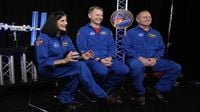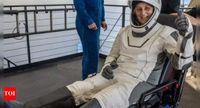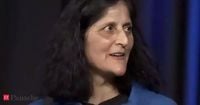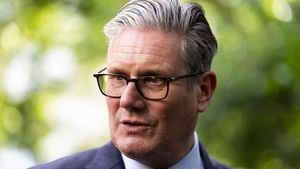NASA astronauts Sunita "Suni" Williams and Barry "Butch" Wilmore have made headlines following their return to Earth on March 18, 2025, after an astonishing 286-day mission that was initially planned for just eight days. As they adjust to life back on solid ground, the focus has shifted to Williams’ recovery, which has garnered significant attention from experts and the public alike.
Vinay Gupta, a pulmonologist and Air Force veteran, shared his insights on Williams’ post-orbit recovery in an interview with Mail Online. He noted, "Her face looks fuller, less sunken than when she first landed. It looks like she’s simply getting better sleep now that she’s back on Earth." Gupta explained that prolonged exposure to microgravity can severely affect metabolism, muscle mass, and circulation, but the return to Earth’s gravity initiates a critical healing process.
According to Gupta, the moment astronauts return to a normal gravitational environment, their bodies begin to readjust. "Her body isn’t under the same stresses it would have been experiencing in space," he elaborated. "She's likely eating healthier, gaining some weight back, and looking noticeably better." After just two weeks on Earth, Gupta believes that Williams has already passed the most challenging phase of her recovery.
The ordeal of being stranded in space for nearly ten months was unexpected for Williams, who reflected on her experience in her first public interview since returning home. "My first thought was, we just got to pivot," she told Fox News. "We planned, we trained for some extended time, so we were ready to jump into it and take on the tasks given to us." Her calm and collected response to the unexpected situation highlights the mental fortitude that astronauts must possess.
Williams' recovery is not just a physical journey but also a mental one. After spending almost a year in space, astronauts undergo rigorous rehabilitation to regain their strength and adapt to Earth's gravity. Gupta emphasized the importance of this process, stating, "The second you’re back on level ground, your body starts to heal and re-equilibrate." This is crucial not only for physical recovery but also for overall well-being after such an intense and isolating experience.
Despite the challenges, Williams has shown remarkable resilience. However, former astronauts have indicated that reversing the effects of long-duration space exposure can take up to 1.5 times the length of the mission. This means that both Williams and Wilmore may require up to a year for full recovery.
On March 31, 2025, Williams spoke to reporters in Houston about her return, expressing her excitement: "It's great getting back. I went for a run—although very slow." This statement underscores the gradual process of regaining physical fitness after such an extended period in space.
As Williams and Wilmore continue their recovery, NASA is also looking ahead. The agency, in collaboration with Boeing, is preparing to conduct a ground test of the Starliner spacecraft this summer, with another test flight planned for early 2026. This initiative highlights the ongoing advancements in space exploration and the lessons learned from the recent mission.
In conclusion, the journey of Sunita Williams and Barry Wilmore serves as a testament to human resilience and the adaptability of astronauts in the face of unprecedented challenges. Their experiences not only contribute to our understanding of long-duration space travel but also inspire future generations to pursue careers in science and exploration. As they navigate their recovery, Williams’ story, in particular, exemplifies the strength and determination that define the spirit of exploration.






